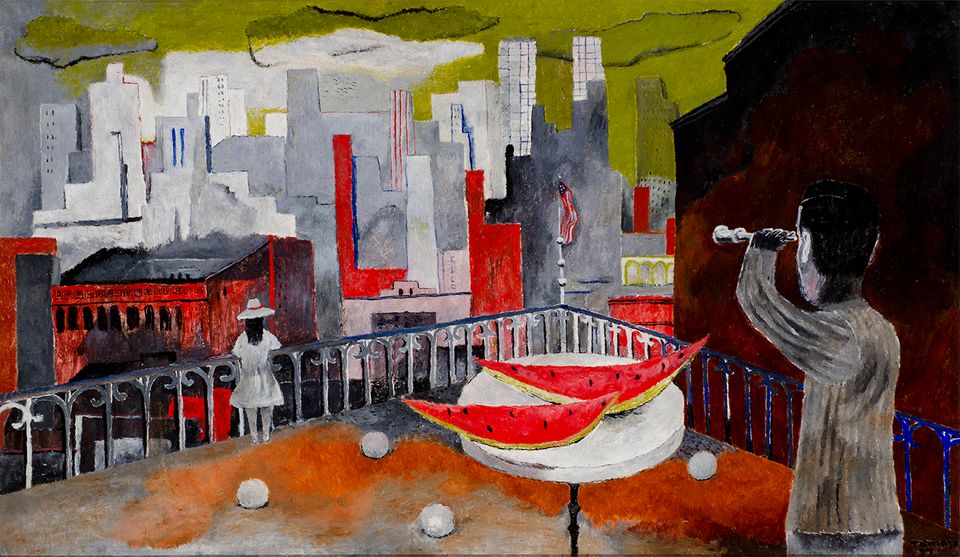
Rufino Tamayo, New York Seen from the Terrace [Nueva York desde la terraza], 1937, oil on canvas, 20 3/8 x 34 3/8 in. FEMSA Collection. © Tamayo Heirs/Mexico/Licensed by VAGA, New York, NY. Photo by Roberto Ortiz

Carlos Chávez was Mexico’s most important composer of the twentieth century, as well as a conductor, theorist, educator, and founder of the Mexican Symphony Orchestra. Like his good friend, Rufino Tamayo, whose works are currently on view in the exhibition, Tamayo: The New York Years, he was born in Mexico in the last year of the nineteenth century, 1899. Having one foot in each era would somehow cast its shadow over both their compositions: how do you invent something for the new, modern world that would also pay homage to Mexico’s rich cultural past?
In 1926, Chávez, who felt a connection to the United States because it was part of the Americas, just like Mexico, suggested that the two friends spend time in New York. This would be the first time for Tamayo, but a second for the composer, who visited the city between 1923 and 1924. A previous trip to Paris left Chávez unimpressed and with the feeling that “In Europe, things are already [done].”
Compared to the “old” European ways of doing things, New York represented the possibility of creating something new in both fine art and music (Chávez had a fondness for jazz), as well as literature, theater, and dance. The city was a natural magnet, attracting artists from both Europe and Latin America. Both men were taken with the modern city buzzing with the marvel of electric lights, new technologies, and a creative environment that fostered artistic possibility and thought. Chávez and Tamayo shared an apartment on 14th Street, in lower Manhattan, at the northern end of Greenwich Village, an artist’s mecca, then and now. The city was bursting with art and creativity, and as Tamayo recalled, “In New York, I went berserk over painting.”
On Sunday, December 3 at 2 pm, Tamayo and Chávez will be celebrated when the Pasatono Orquestra Mexicana, plays music from Oaxaca, Mexico, the region where Tamayo was born. Using traditional instruments, the orchestra combines historic Oaxacan music with contemporary sounds. On the program are works by Tamayo’s good friend and compatriot and 14th Street roommate, Carlos Chávez. The program includes works that Chávez presented at Twenty Centuries of Mexican Art, the influential exhibition presented at the Museum of Modern Art in 1940. Sunday's program, free and open to the public, will be held in the museum’s Kogod Courtyard.
Learn more about Sunday's program featuring the Pasatono Orquestra Mexicana.
Tamayo: The New York Years remains on view through March 18, 2018.

















